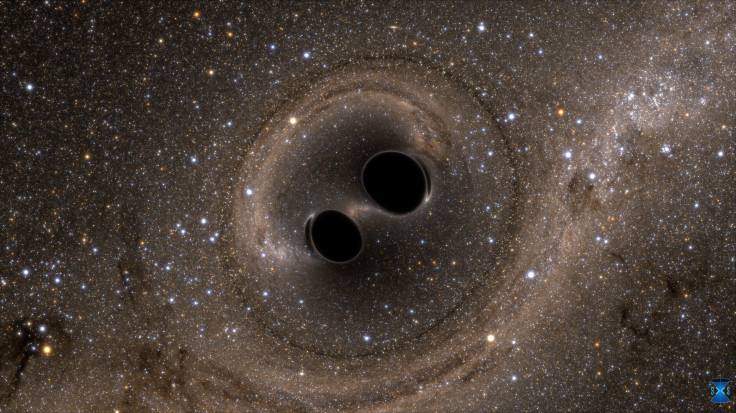Gravitational Waves Are Created Just 10 Million Years After Supermassive Black Holes Merge

Earlier this year, scientists at the Laser Interferometer Gravitational-Wave Observatory (LIGO) facilities in Washington state and Louisiana announced that they had discovered ripples in the fabric of space-time, also known as gravitational waves. In this particular case, the ripples were caused by two black holes located roughly 1.3 billion light-years from Earth colliding and merging.
In a new study published Tuesday in the Astrophysical Journal, an international team of astrophysicists from the University of Zurich, the Institute of Space Technology Islamabad, the University of Heidelberg and the Chinese Academy of Sciences has calculated the exact point at which gravitational waves are triggered and propagated throughout space when galaxies and the supermassive black holes at their centers merge — something that, until now, had been extremely hard to predict.
“The result is surprising,” co-author Lucio Mayer from the University of Zurich said in a statement. “The merging of the two black holes already triggered the first gravitational waves after 10 million years – around 100 times faster than previously assumed.”

Much like ripples created on the surface of water by a falling pebble, distortions in the fabric of reality are created when massive objects such as black holes and neutron stars collide. These distortions, whose existence was first theorized over a hundred years ago by Albert Einstein, were finally discovered by scientists at the Laser Interferometer Gravitational-Wave Observatory (LIGO) facilities in Washington state and Louisiana in February.
This discovery triggered enormous excitement among scientists, who saw it as a step toward the eventual creation of a “gravitational map” of the universe that would enable us to study celestial objects and events that would otherwise remain hidden from view.
The latest study, based on a computer simulation of two 3-billion-year-old galaxies merging, further refines our understanding of how gravitational waves are produced.
“Our calculations therefore allow a robust forecast for the merging rate of supermassive black holes in the early stage of the universe,” Mayer said. “They may help assess the gravitational waves eLISA is bound to find in the near future more effectively.”
European Space Agency’s eLISA — short for Evolved Laser Interferometer Space Antenna — is a proposed gravitational wave observatory scheduled for launch in 2034. The mission aims to identify, locate and study the sources of these waves, which could provide invaluable insight into the formation, evolution and overall structure of the universe.
© Copyright IBTimes 2024. All rights reserved.






















